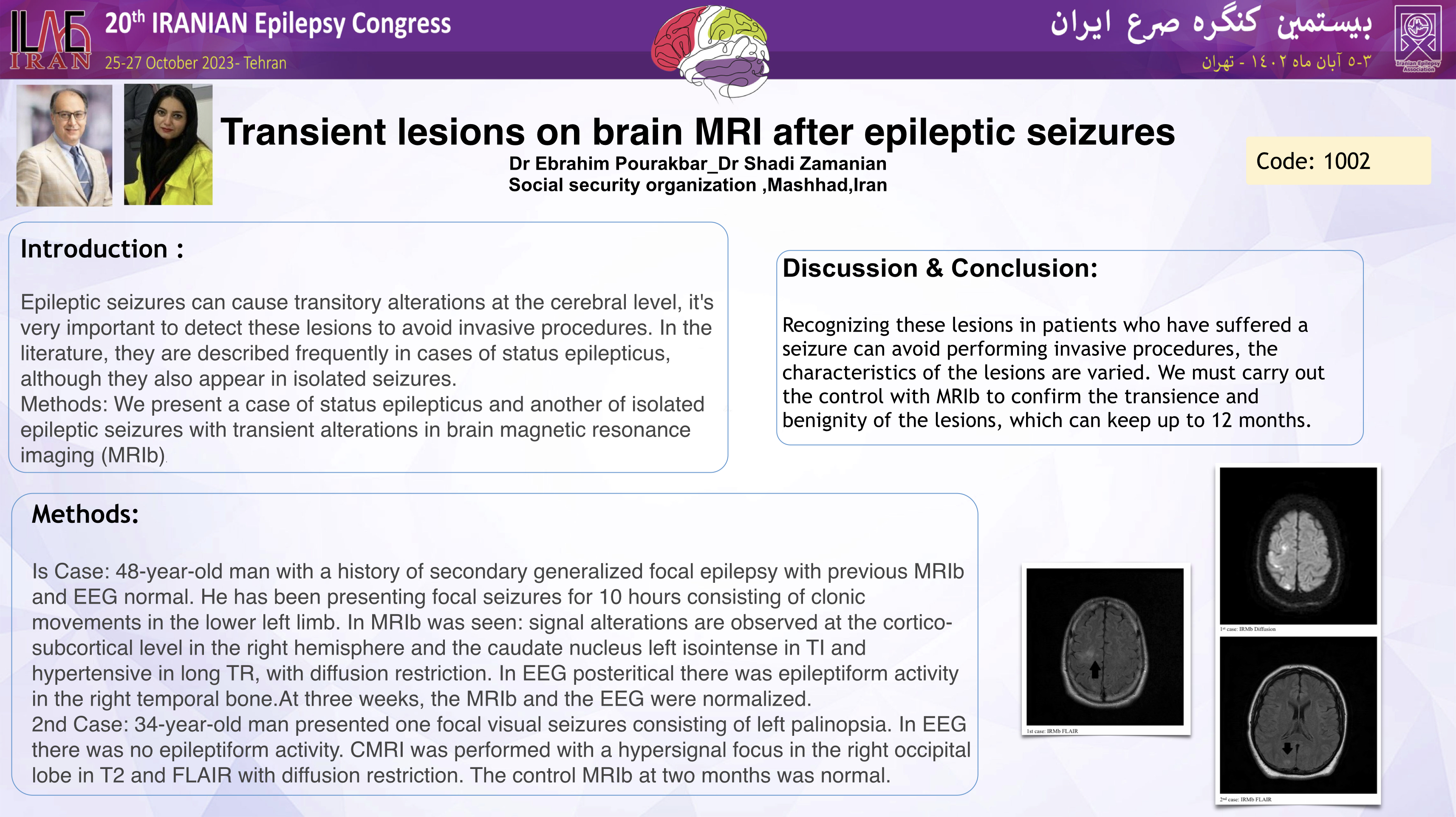Transient lesions on brain MRI after epileptic seizures
کد: G-1002
نویسندگان: Ebrahim Pourakbar ℗, Shadi Zamanian ©
زمان بندی: زمان بندی نشده!
دانلود: دانلود پوستر
خلاصه مقاله:
خلاصه مقاله
Background and Objectives: Epileptic seizures can induce transient cerebral alterations, which are crucial to identify to avoid unnecessary invasive procedures. While these alterations are frequently described in cases of status epilepticus, they can also occur in isolated seizures. This study presents two cases, one involving status epilepticus and the other isolated epileptic seizures, both exhibiting transient brain magnetic resonance imaging (MRI) abnormalities (MRIb). Methods: 1st Case: A 48-year-old man with a history of secondary generalized focal epilepsy, previously normal MRIb, and EEG, presented with 10 hours of focal seizures characterized by clonic movements in the lower left limb. MRIb revealed signal alterations in the right hemisphere at the cortico-subcortical level and isointensity in T1 with hypertensity in long TR in the left caudate nucleus, along with diffusion restriction. EEG demonstrated epileptiform activity in the right temporal region. After three weeks, both MRIb and EEG normalized. 2nd Case: A 34-year-old man experienced a focal visual seizure featuring left palinopsia. EEG did not show epileptiform activity. Brain MRI exhibited a hyperintense focus in the right occipital lobe in T2 and FLAIR sequences with diffusion restriction. A follow-up MRIb performed two months later showed a normal result. Conclusion: Detecting transient cerebral alterations in patients who have experienced seizures is essential to avoid unnecessary invasive procedures. These alterations can manifest with diverse characteristics. Follow-up MRIb is crucial to confirm the transient and benign nature of these lesions, which can persist for up to 12 months. Timely recognition and appropriate monitoring can spare patients from invasive interventions and provide reassurance regarding the temporary nature of these abnormalities.
دیدگاه ها (0)
ارسال یک دیدگاه
ارسال دیدگاه توسط مدیریت بسته شده است.
